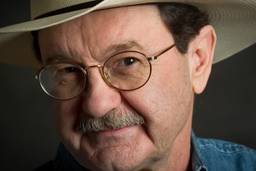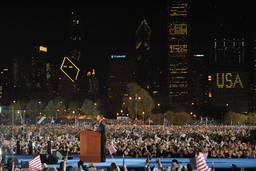The Crafting of Obama
When Barack Obama launched his presidential bid, he decided to build a staircase, not merely a platform, thereby differing with most African-American presidential aspirants
Laura S. Washington
To my esteemed colleague, In These Times Senior Editor Salim Muwakkil:
I love your work, but I have to call you out on your missive in the August issue, “The Squandering of Obama.”
You suggest that America’s first serious black presidential candidate is running away from race. “Perhaps he came to believe that political success was incompatible with efforts to promote a serious racial reckoning,” you wrote last month. You also argue that Obama’s handlers are reining him in and steering the candidate away from “a progressive revolution.”
Salim, give the brother some credit.
Obviously you have never built a staircase. I’m no carpenter myself, but I know the drill. Carpentry is an art that can illuminate the task of running for president–particularly for one who is African American.
Webster’s defines a staircase as “a means of access as from one level to another, consisting of a series of stairs with or without a balustrade.” When you set out to erect a staircase, the key task is measurement. Every space must be painstakingly configured to the nth degree. The runners, risers and stair treads must all conform to a master plan.
When Barack Obama launched his presidential bid, he became a carpenter. He was forced to make a decision: Did he want to build a staircase, or merely a platform?Ê
Historically, most African-American presidential aspirants have taken the platform route.
You don’t have to be an expert on the law of gravity to know that a platform won’t get you to the top.
Al Sharpton, Carol Moseley Braun and Shirley Chisholm built platforms. That is not to belittle their accomplishments. Still, a realistic assessment of their candidacies must acknowledge their aspirational aspects. They pushed valid ideas with passion, but left no real footprint in the electoral world. They neither built nor left a political organization that could elevate future messengers. The campaigns left behind only wisps of colorful smoke on a politically arid landscape.
The Rev. Jesse Jackson Sr., who took shots at the White House in 1984 and ‘88, was a more able and ambitious carpenter. Still, his resources were limited to his marquee name and a set of rhetorical skills that careened off the charts. Jackson struggled to build a staircase that could accommodate a host of progressive and multi-cultural elements and lift them to new heights in power.
Jackson was a carpenter with a febrile imagination. The magic of Jackson’s candidacy was his ability to broaden his focus to include groups outside his core constituency. His grand coalition of farmers, farm workers, Native Americans, day laborers, coal miners, factory hands, unionists and students was reminiscent of the days of progressives like Henry Wallace and “Fighting Bob” LaFollette.
He left behind a staircase. True, it was rickety, but one that future aspirants could consult and study.
Jackson’s staircase was fashioned with soft pine and balsa wood. Obama’s must be hewn from oak and cherry wood.
Those elements are more difficult to work with, but expert carpenters know they produce a structure infinitely more fecund and long-lived.
Obama started making his measurements 20 years ago, when he began building his career. A multicultural upbringing in Hawaii and Asia, on to Harvard, the University of Chicago, stints at community and electoral organizing, and a few rounds as a policy wonky legislator. Every move was carefully calibrated to culminate in a dream resume for a presidential wannabe.
There are three basic building blocks that will propel a candidate through the front door of the 21st Century White House: money, organization and the Internet. No black presidential aspirant has ever gotten a handle on any of the three. Obama has mastered them all.
Obama hasn’t squandered his progressive credentials, he has finely honed them. The candidate is calling for more strategic attention to education funding, while at the same time demanding more parental involvement. He appeals to black pride but eschews the losing prospect of posturing as the “black candidate.” He condemns inequities in the American electoral system, while demanding that “Cousin Pookie” get off the sofa and vote.
His “black” agenda should include rescuing all of us from the Iraq catastrophe, ratcheting up his attacks on America’s vast income disparities, and banishing corporate interests from our health care and campaign finance systems.
Salim Muwakkil and others posit that Obama’s failure to challenge America’s racist legacy betrays his progressive roots. Trying to dismantle the architecture of American white supremacy won’t get him to the White House. If he doesn’t reinforce that rickety old staircase, he’ll end up with a pile of sawdust.








